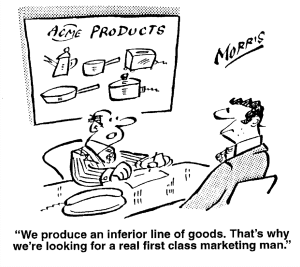 The real question is not “how to build” something. There are enough technology experts around us who can build stuff. Capital, technology, processes and standards are only secondary to good product design. The real question then, is “what to build”, or “what to build” better.
The real question is not “how to build” something. There are enough technology experts around us who can build stuff. Capital, technology, processes and standards are only secondary to good product design. The real question then, is “what to build”, or “what to build” better.
It’s a tough question, but an important one for any entrepreneur (aspiring or established) to address early on. Most startups fail because they build something people never wanted in the first place (i.e. it doesn’t really solve a real-life problem or doesn’t add any value to an existing process), or they take too long (often over-engineering) to build something and hence fail to gain early feedback.
Over the past few months, I have observed that a successful (viz. revenue generating at the very least) product should be able to satisfy one (or more) of these four broad scenarios:
1. It directly helps people make money. Such a product would allow the users to monetize their own skills, creations or digital assets. A few good examples of this product category are Google AdSense, Square, Etsy and oDesk.
2. It directly helps people save money. Such a product would allow the users to save money on their current expenditure (personal or business), or at-least help them manage their money better to start with. A few good examples of this product category are Mint and Google Apps.
3. It helps people to collaborate easily. People like to share stuff and stay in sync (across devices), while saving time and effort. That makes collaboration really effective and lucrative. It also makes this the most crowded category of all. Everything from Project Management apps to Social Networking apps to iPhone/iPad apps try to fit in this broad segment. But only a few genuine products survive due to two factors: most products are too bloated to be used efficiently, and secondly the sheer volume of this segment requires ingenuity. A few good examples of this product category are Dropbox, Evernote, Posterous and Basecamp.
4. It helps people customize a physical good or object. People like to stand-out in the physical world, by looking unique or by creating unique things. A few good examples of this product category are Shoes of Prey, Arduino and Blank Label.
These scenarios can be interpreted as statistical buckets. I’m not suggesting that all products follow (or must follow) these scenarios or that these are magical in any way.
On the contrary, I believe that a successful product is ingenious and simple. It should do less, but it should do that better than the rest. It’s not a novel idea, but first and foremost – you should consider building what you want. Keep it small. Build something that you would want to use everyday. Keep it simple. Build something that solves your own problem.
If you enjoy eating your own dog-food, you’ll eventually find others willing to pay you to share your dog-food with them.